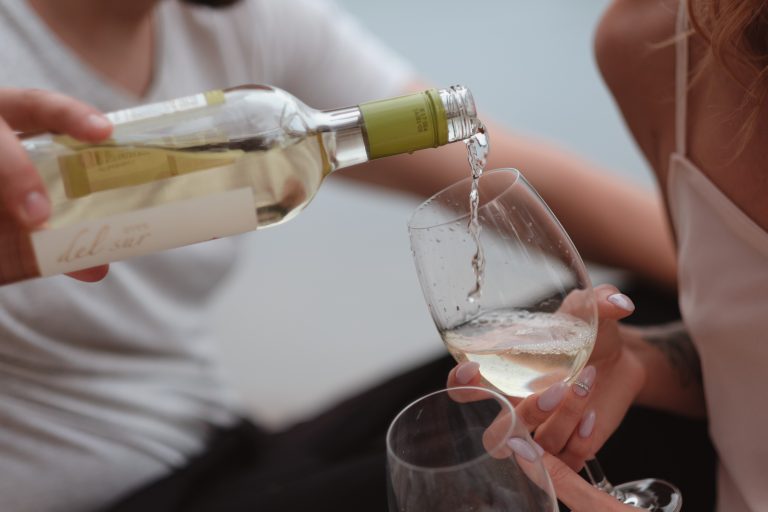Verdejo is a fresh, citrus-laden white wine, from Spain’s Rueda region. Situated in Castilla y León, northwest of Madrid, Rueda is the heartland of this vibrant wine. Its proximity to the city of Valladolid further bolsters its prominence.
As the Northern Hemisphere welcomes summer, it’s an opportune time to delve into the delightful world of Verdejo.
In the ensuing discussion, we unfold the story of Verdejo – its multifaceted flavour profile, the ideal ways to savour it, and potential food pairings. We explore why Verdejo stands tall as an outstanding and versatile dry white wine that can invigorate any meal.
Jump To a Section Below
What Is Verdejo Wine?

Pronounced “Vurr-day-ho”, Verdejo is a light-bodied dry white wine that is grown almost exclusively in Spain. The wine is a very good alternative to Sauvignon Blanc and Pinot Grigio, with the bonus of surprising changes in flavours as it ages. For a dry white, Verdejo cellars well.
Verdejo makes subtle but superb white wines with flavours of lime, Meyer lemon, grapefruit, grass, fennel, and citrus blossom. You’re unlikely to find a Meyer lemon in your local supermarket, but they are said to be more fragrant and slightly sweeter than Eureka lemons, the more common lemon cousin.
It is often likened to Sauvignon Blanc, but it’s in its category and so it should be. Verdejo continues to improve over several years of bottle-ageing, where it gains a rich texture and flavours of toasted almonds, supported by sparkly acidity. The bitter flavours of grass and fennel come in at the finish.
Why Is The Rueda Region So Good For White Wine?
The dry, continental climate, diurnal temperature variations and fairly poor-quality and rocky soils here help the grape to reach its best potential. The variety is not found in volume anywhere else globally.
Verdejo still covers the vast majority of Rueda’s vineyards. In 2015, there were 19,059 acres recorded in Spain, accounting for around 2 % of the total vineyard area, and 4.3 % of white varieties. This made Verdejo the number four white variety.
Verdejo is highly regulated like many other wines in European countries. The Rueda DO has many specifications for Rueda Verdejo and other wines made in the region. All wines labelled “Rueda” must be made of at least 50% Verdejo grapes, but specifically, “Rueda Verdejo” wines must be comprised of 85% Verdejo. Most local producers use 100% varietal Verdejo.
The grape is small with light green skin. It’s dry and light-bodied with no tannins and a medium to high acidity.
So, just how do they make Verdejo and why is it so special and sought after by white wine lovers?
How Is Verdejo Wine Made?

Rocky soils, rich in limestone and iron, and lots of Spanish sunshine ensure Verdejo vines yield grapes that are full-bodied, soft and highly aromatic white wines.
Verdejo grapes, like many other varieties, are harvested at night, when the cooler temperatures prevent oxidation and help retain the grapes’ acidity and freshness.
This means that the grapes enter the cellar at a lower nighttime temperature of 10–15 °C (50–59 °F) instead of the daytime temperature, which can be as high as 28–30 °C (82–86 °F) in September. Lower temperatures mean less oxidation or browning of the juice.
Fermentation in stainless steel or concrete highlights the bright, fruit-forward characteristics of Verdejo .
Just how does one drink Verdejo when trying it for the first time? Here are some pointers to get the most out of your first attempts.
How Do You Drink Verdejo?
One of the best ways to drink Verdejo, as you might have guessed by now, is to pair it with food. The wine’s higher acidity and subtle bitterness make it a brilliant palate cleanser.
When pairing it with food, always keep lime and citrusy flavours in mind to enjoy the best pairing, particularly with Verdejo which has not been aged in oak. For a Verdejo wine that has noticeable oak-ageing, this one will pair well with meals made from heavier cream or coconut-based sauces.
What Do You Eat With Verdejo Wine?
Some examples would include:
- Meat: Lime Chicken, Chicken in Almond Sauce (pollo en pepitoria), Carnitas, Fish Tacos, Sole, Seitan, and Tofu
- Cheese: Sheep’s Milk Cheeses: Manchego, Queso Zamorano, Pecorino, Feta, Halloumi, Petit Basque, and Ricotta
- Herb/Spice: Lime, Tarragon, Cilantro, Basil, Parsley, Garlic, Ginger, Galangal, Sichuan Pepper,
- Red Pepper Flake, Cayenne Pepper, Cumin, Coriander, Tamarind, and Pine Nuts
- Vegetables: Potatoes, Artichokes, Leeks, Shallot, Bell Peppers, Asparagus, Avocado, Rocket, Pineapple, Coconut, Mango, and Green Onion.
Popular pairings could include Red peppers stuffed with goats’ cheese, Vietnamese pancakes with pork and prawn, and Smoked salmon parfait.
All in all, pair a bottle of Rueda Verdejo with shellfish, fresh cheeses, vegetables, spicy foods, or salad. Or just enjoy it as an apéritif on a hot day.
Is Verdejo Wine Expensive?

For all its complexity and sophisticated winemaking styles now being used, one would assume Verdejo’s prices are rising to match. Nope, not so. Instead, most Verdejos can be had for just over £15. Those that cost more are usually refined and aged but are still far less pricey than their better-known French counterparts.
Is Verdejo A Verdelho?
Generally, Verdejo is grown mainly in Spain (where it is famous for being the primary grape in Rueda, while Verdelho is cultivated primarily in Portugal (where it is used in the making of Madeira).
Keen to try your hand at delicious Verdejo and impress your mates? Here are 8 suggestions of bottle available in Britain:
- José Pariente Verdejo 2020
- Naia Naiades 2016
- Menade Finca Lallana Verdejo 2020
- Naia Naia 2020
- Bodega De Bardos Rueda Verdejo 2020
- Protos Verdejo 2020
- Diez Siglos Verdejo 2020
- ASDA Extra Special Selection Palacio De Vivero Verdejo 2020.
So, do yourself a favour and try this plucky dry white from across the Channel, even if for a change from the ubiquitous Sauvignon Blanc or you’re expanding your palate and want to impress your mates.

Born amidst the rolling vineyards of Napa Valley, Chloe’s love for wine was instilled from a young age. This passion led her to the picturesque wine regions of France, where she immersed herself in the rich wine culture and traditions.
Chloe’s dedication to the craft culminated in her becoming a wine sommelier, a testament to her deep knowledge and appreciation for wines.